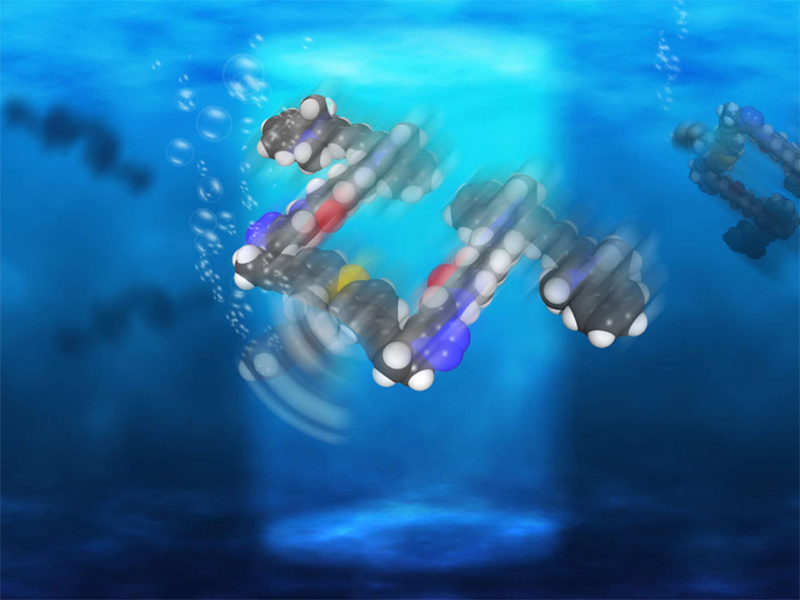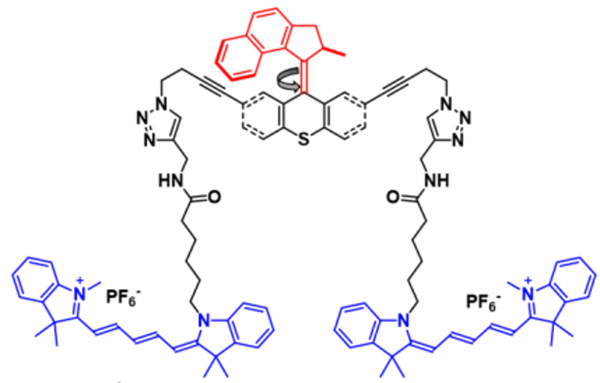
19th November 2015 Nanosubmarines powered by light Nano-scale submarines built from 244 atoms and capable of moving at 2 cm per second have been demonstrated by Rice University.
In a study published by Nano Letters, scientists from Rice University in Texas describe how they built and tested nanoscale submarines, which are able to move with incredible speed. The single-molecule, 244-atom submersibles each have a motor powered by ultraviolet light. With each full revolution the motor's tail-like propeller drives the sub forwards a distance of 18 nanometres (nm). However, the motors run at over a million RPM, giving a top speed of nearly two centimetres (0.8 inches) per second: a breakneck pace on the molecular scale. "These are the fastest-moving molecules ever seen in solution," says chemist James Tour, one of the study authors. While they can't be steered yet, the study has proved that molecular motors are powerful enough to drive the sub-10-nanometre craft through solutions of moving molecules of about the same size. From a nano-scale point of view, "this is akin to a person walking across a basketball court with 1,000 people throwing basketballs at him," Tour said. Tour's group has extensive experience with molecular machines. A decade ago, his lab demonstrated nanocars – single-molecule cars with four wheels, axles and independent suspensions that could be "driven" across a surface. Over the years, many research groups have created microscopic machines featuring motors – but most have either used or generated toxic chemicals. A motor conceived in the last decade by Dutch researchers proved suitable for the Rice submersibles, which were produced in a 20-step chemical synthesis. "These motors are well-known and used for different things," said Victor García-López, lead author and Rice graduate student. "But we were the first to propose they can be used to propel nanocars – and now submersibles."
The motors, which operate more like a bacteria's flagellum than a propeller, complete each revolution in four steps. When excited by light, the double bond that holds the rotor to the body becomes a single bond, allowing it to rotate a quarter step. As the motor seeks to return to a lower energy state, it jumps adjacent atoms for another quarter turn. This process repeats as long as the light is on. Once built, the team turned to Gufeng Wang at North Carolina State University to measure how well the nanosubs moved. "We had used scanning tunnelling microscopy and fluorescence microscopy to watch our cars drive, but that wouldn't work for the submersibles," explained Tour. "They would drift out of focus pretty quickly." The North Carolina team sandwiched a drop of diluted acetonitrile liquid containing a few nanosubs between two slides, then used a custom confocal fluorescence microscope to hit it from opposite sides with both ultraviolet light (for the motor) and a red laser (for the pontoons). The microscope's laser defined a column of light in the solution, in which tracking occurred, García-López said: "That way, the NC State team could guarantee it was analysing only one molecule at a time." The team hopes future nanosubs will be able to carry cargoes for medical and other purposes. "There's a path forward," García-López said. "This is the first step, and we've proven the concept. Now we need to explore opportunities and potential applications."
Comments »
|








